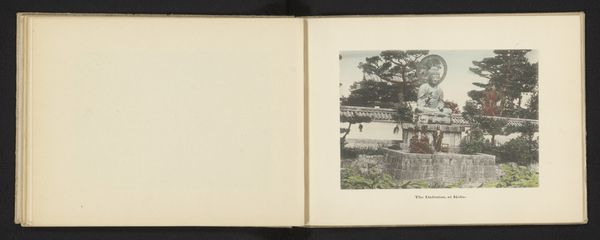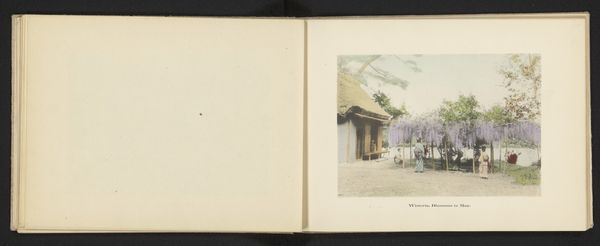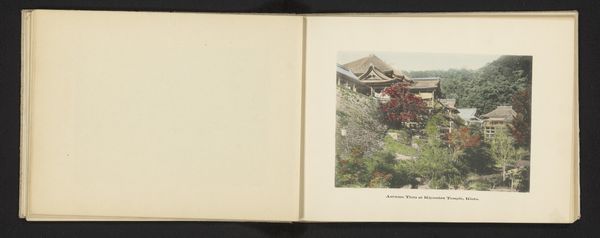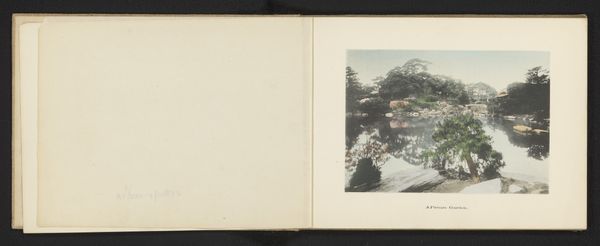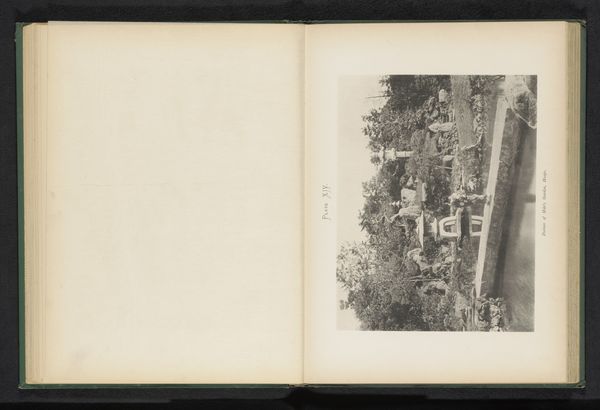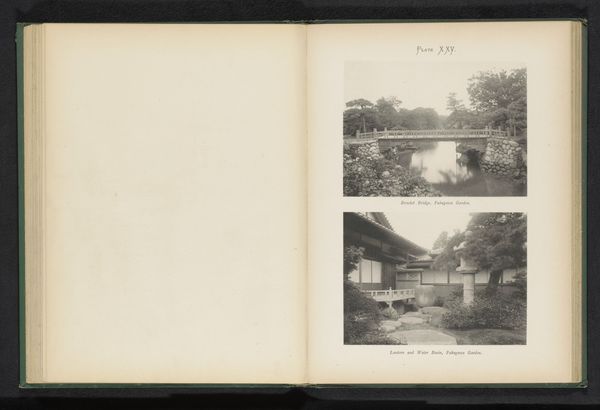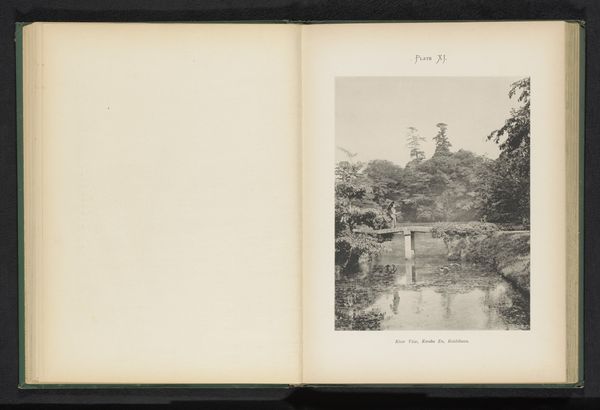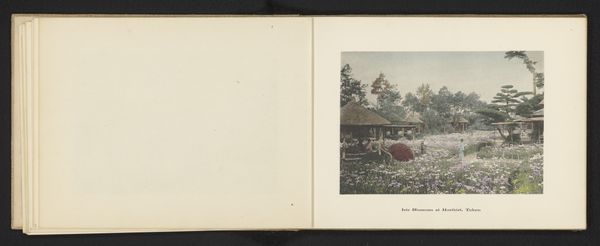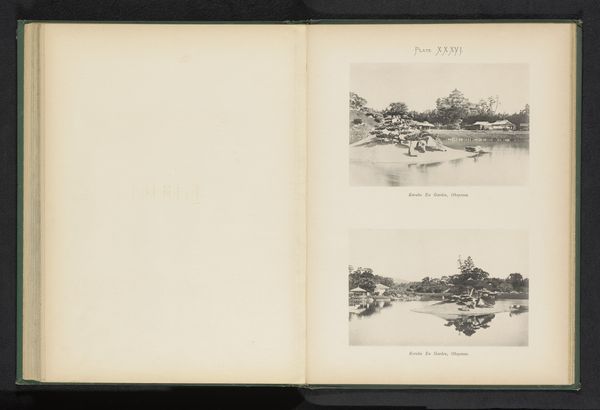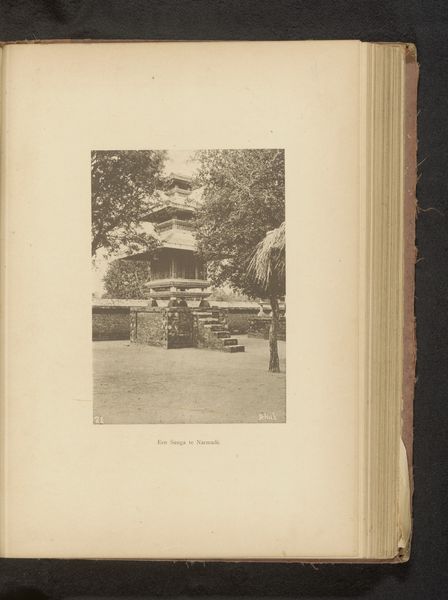
photography
#
asian-art
#
landscape
#
photography
Dimensions: height 105 mm, width 149 mm
Copyright: Rijks Museum: Open Domain
Curator: The softly muted tones of this hand-colored photograph capture a moment of quiet grandeur. This image, dating from the late 19th or early 20th century, is entitled "Gezicht op de Chion-in in Kyoto" or "View of the Chion-in in Kyoto". It's attributed to Kōzaburō Tamamura. What is your initial response to it? Editor: It immediately evokes a sense of tranquility, almost meditative. The subtle color palette reinforces that. I’m also struck by the way the architectural structure looms behind the figures below—the gate itself feels like a liminal space. Curator: Precisely! Chion-in Temple is the headquarters for the Jōdo shū sect of Japanese Buddhism. Note the way Tamamura frames the gate – it acts almost as a portal. Temples frequently are physical locations which have embedded meaning, marking a symbolic location for adherents to reflect on transitions of worldly states of existence, an actual gateway for people moving toward a goal. The gate is itself an iconic threshold, marking an initiation and reflecting cultural values concerning states of transformation. Editor: Yes, I see the people on the path and think of pilgrimage, and the journey being just as important as the destination, with people engaging to cross a metaphorical boundary. I wonder how accessible such a space would have been to women during the time this image was made. Were these journeys as freely open to all genders? It feels important to recognize that the sense of peace we see here might not have been universally experienced. Curator: That’s a valid point. What this image preserves is a glimpse into a very specific moment and experience. Perhaps understanding that tension is another gateway – a gateway into deeper empathy, maybe? These temples frequently represent the journey to enlightenment or transcendence through images that are coded and accessible only to those initiated in temple cultural and spiritual knowledge. Editor: I agree. It's important to remember the limitations and perspectives embedded in these visual artifacts. I will contemplate my privilege when considering a cultural site and reflect on those excluded or who would find that place hostile. Curator: Precisely. The photo invites not only observation, but further ethical reflection and social engagement. Editor: Thank you! I definitely feel like I have additional points to consider regarding images of traditional cultural spaces.
Comments
No comments
Be the first to comment and join the conversation on the ultimate creative platform.


